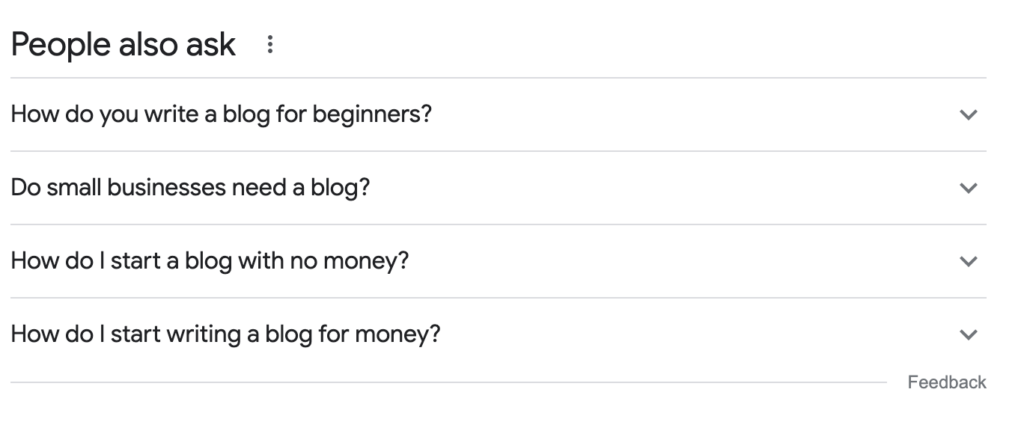When I started to write this article, it was not called ‘How to use Blogs for SEO’.
You see, I knew what I wanted to tell you, dear reader, but the first thing I did before I decided on the title was to research keywords I could use.
Why? Because keywords themselves, plus the volume of monthly searches and the competitiveness of those keywords matter.
I won’t labour this point, as I have something more pressing to tell you, but just to get you started on the right foot….
I first started looking at keywords like, “how to use search intent for blogging”, but sadly there was little volume of people wanted that specifically… so I tried again with “how to use blogs for SEO” – and voila.
Take a look at the image:

Now, I’m not after massive volumes – just a share of small volumes on keywords that are not that competitive (in the long tail), as I’ve got way more chance of showing up, and not competing with big SEO players out there – because I don’t want to compete with SEO agencies, I TEACH MARKETING.
But here’s the main point I want to make.
When we write “how to….” content, we are playing into what we call Informational Intent.
You see, there are 4 different types of intent someone has when they are searching in google:
- Informational Intent: This intent is when users are seeking information or knowledge about a topic. They might want to learn something new, find answers to questions, or get more details on a specific subject.
Example: A user types “How to bake a chocolate cake” into a search engine. In this case, the user is looking for information on the steps or recipe to bake a chocolate cake. - Navigational Intent: Users with navigational intent are trying to reach a particular website or page. They already have a destination in mind and use the search engine to navigate to that specific location.
Example: Someone searches for “Facebook login” on a search engine. Here, the user’s intent is clearly to find the login page of Facebook, not to learn about Facebook or its login processes. - Transactional Intent: This is when a user intends to perform a specific action or transaction, such as making a purchase, signing up for a service, downloading an app, etc. These searches are often made by users who have already made a decision to buy or engage in a specific activity.
Example: A search query like “Buy iPhone 15 online” indicates that the user is looking to purchase an iPhone 15 and is likely seeking a store or website to make the transaction. - Commercial Investigation Intent: This intent involves searches where users are considering a purchase or a transaction but are still in the process of researching and comparing options. They are not yet ready to buy but are gathering information to make an informed decision.
Example: Searching for “Best running shoes 2023” suggests that the user is in the market for running shoes and is looking for recommendations or comparisons to decide which ones to buy.
HERE’S THAT IMPORTANT PART TO NOTE ON HOW TO USE BLOGS FOR SEO
60% of keywords used (according to neilpatel.con) are based on Informational Intent!
So, your customers are actively looking for information on your subject area – and if you are not showing up, and creating that relationship with them, with valuable content, then they will be looking elsewhere. And who will they buy from when they are ready?
You guessed it – your competitors.
So if you want to know how to use blogs for SEO, here it is:
- Think about your customer pain points and write about those, and how they can make a transformation.
- Check out a reputable keyword planner to look at what is being searched for (think who, how, what, when, where and why). That’s going to support you with coming up with real gems of informational intent content.
- For speed, why not just do a google search. If you look at the image below, for the search “how do i write a blog for my small business”. You’ll see that google naturally makes suggestions in the ‘People Also Ask’ section, that are based on what’s popular.

And finally, make sure you ask them to take the next logical step in the journey, throughout and at the end of the blog, for example:
1. Register
2. Download
3. Book
Your aim is, in some shape or form, to create a lead out of them. Afterall, they are looking for information about what you sell, so you know they’re in the market! At least capture their data!










